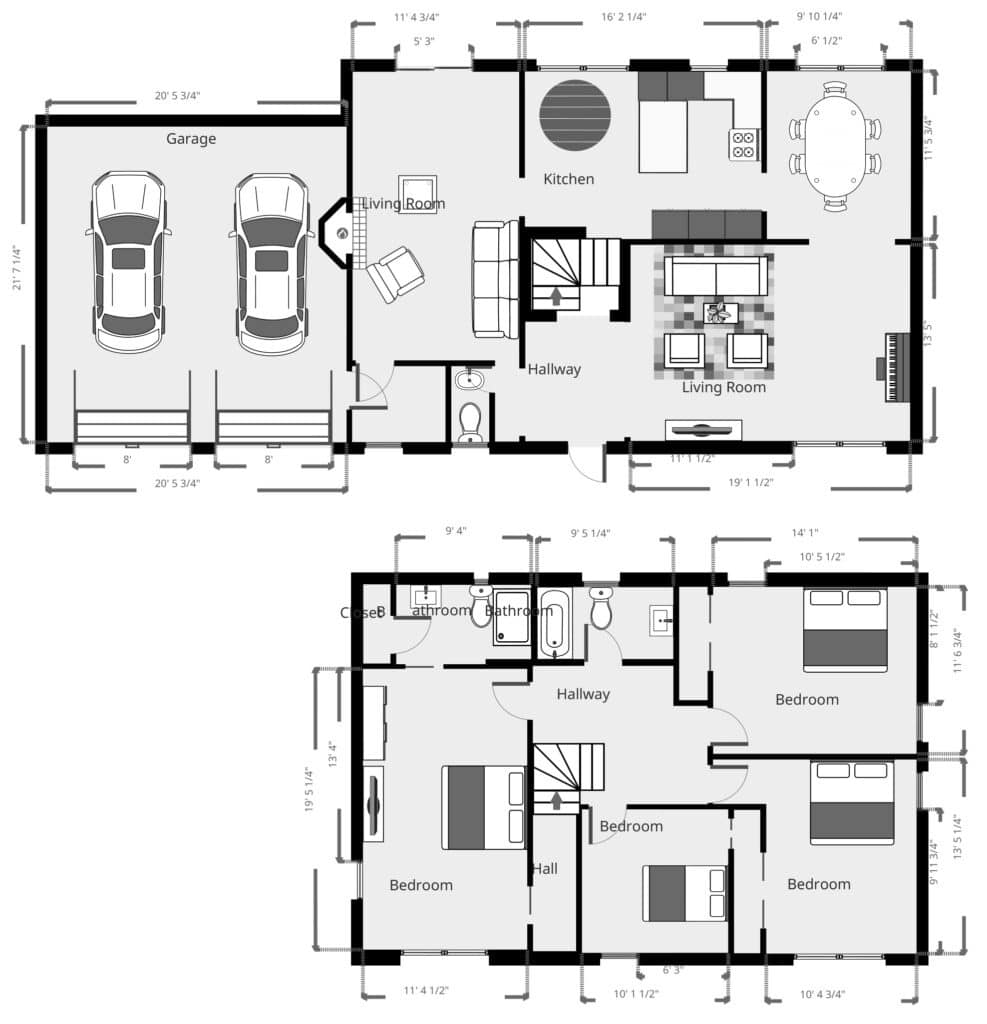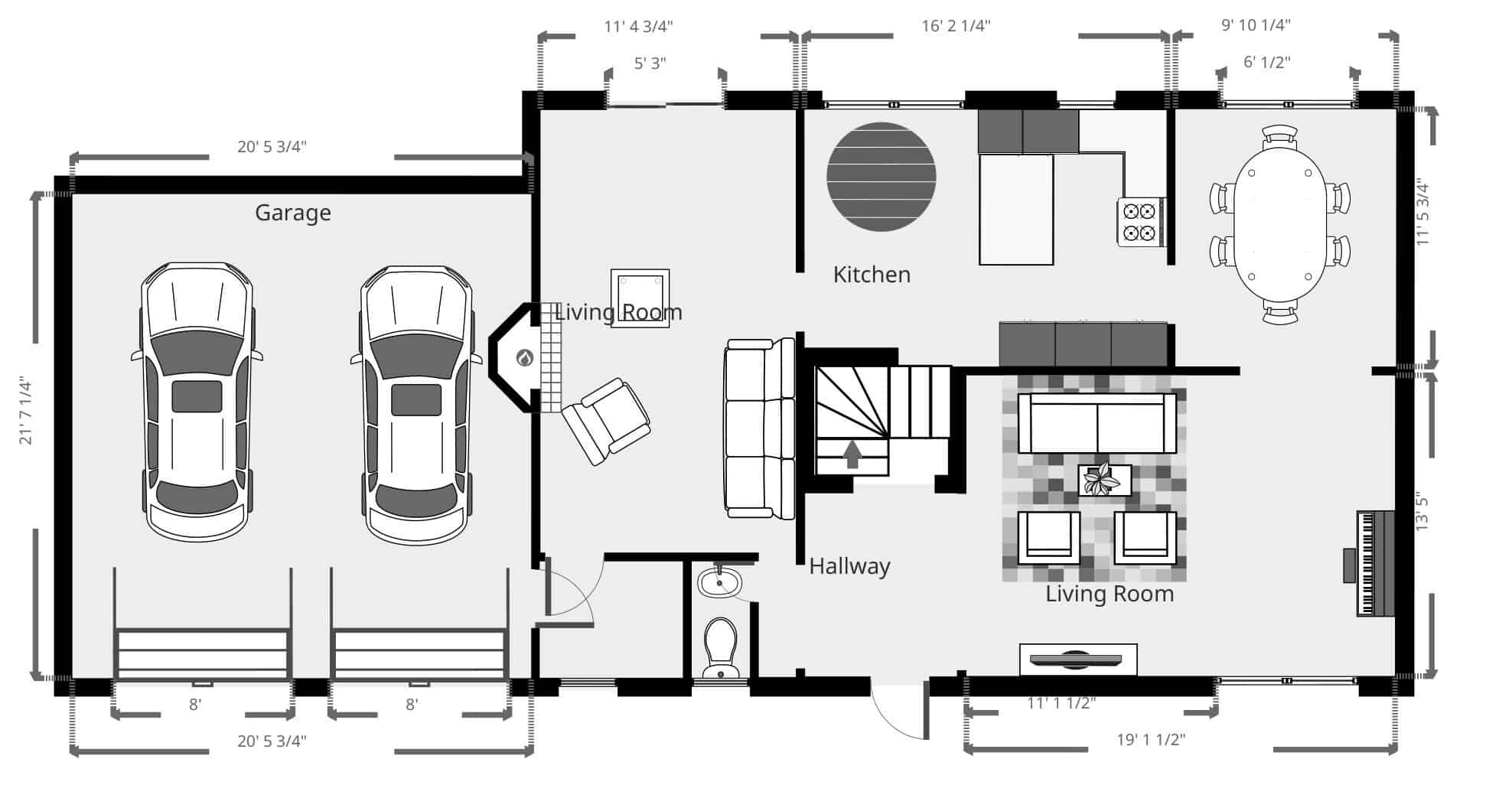The world of real estate is ever-evolving, with new technologies and strategies constantly emerging. One such tool that has gained significant popularity in recent years is floor plans in real estate photography. These simple yet powerful visual representations offer an invaluable source of insights into a property, helping both buyers and sellers make informed decisions. In this article, we will delve into the significance of floor plans in real estate photography and how they unlock a myriad of insights about a home.
Floor plans are essentially scaled drawings of a property’s layout, showcasing the dimensions and arrangement of each room. While traditionally used mainly by architects and builders in the design and construction process, floor plans are now widely utilized in the realm of real estate. When incorporated into real estate photography, floor plans provide an additional layer of information that can greatly enhance the understanding and evaluation of a property.

One of the key advantages of floor plans in real estate photography is their ability to offer a comprehensive overview of a property’s layout. Unlike static images, floor plans provide a clear and organized representation of the entire space, giving buyers a better understanding of how the rooms are positioned and connected. This allows potential buyers to visualize the flow of the property, helping them determine if the layout suits their lifestyle and needs. A meticulously designed floor plan offers clarity and transparency, leaving no room for confusion or misinterpretation.
Furthermore, floor plans help potential buyers accurately assess the size and proportions of a property. A well-executed floor plan provides precise measurements of each room, allowing buyers to gauge whether their furniture and belongings will fit within the space. This can help avoid the disappointment and inconvenience of discovering that a coveted piece of furniture cannot be accommodated in a particular room. By providing accurate dimensions, floor plans also eliminate any doubts or uncertainty about room sizes, providing a more transparent representation of the property.
Another significant advantage of floor plans in real estate photography is their ability to highlight the functionality and potential of a property. By showcasing the relationship between rooms, floor plans help buyers envision the possibilities for customization and renovation. For instance, if a buyer is looking to create an open-concept living area, a floor plan can reveal if the walls between the kitchen and living room can be removed to achieve the desired result. This empowers buyers to imagine the space according to their preferences, giving them a clearer picture of how the property can be transformed to suit their needs.
Moreover, floor plans in real estate photography can enhance the marketing efforts of sellers and real estate agents. Including floor plans in property listings can attract serious buyers who are searching for properties that align with their specific requirements. By providing an accurate representation of the property’s layout, sellers can effectively target their ideal audience and generate greater interest. Additionally, floor plans can be easily shared on various platforms, such as websites and social media, amplifying the property’s exposure and capturing the attention of potential buyers.
In today’s digital age, technology has further propelled the power of floor plans in real estate photography. With the advent of virtual tours and 3D modeling, floor plans can be seamlessly integrated into immersive experiences that allow buyers to virtually explore a property. This interactive approach not only enhances the engagement of buyers but also provides a more immersive and realistic understanding of the property. By coupling floor plans with virtual tours, buyers can navigate through the property, seamlessly transitioning from room to room, and truly experience the flow and ambiance of the space.
In conclusion, floor plans in real estate photography introduce a new dimension of insights and understanding to the world of property evaluation. By offering a comprehensive overview of a property’s layout, showcasing accurate dimensions, and highlighting functionality and potential, floor plans empower both buyers and sellers to make informed decisions. As this technology continues to evolve, we can expect floor plans to become an increasingly integral part of real estate photography, unlocking a wealth of insights and driving the success of property transactions.
Incorporating floor plans in real estate photography can significantly enhance the buying and selling experience. Whether you are a buyer looking for your dream home or a seller aiming to attract serious buyers, consider the benefits of utilizing floor plans. By providing a clear understanding of a property’s layout, dimensions, and potential, floor plans empower you to make informed decisions and maximize your investment.
If you are in the real estate industry, it’s time to embrace the power of floor plans. Incorporate them into your marketing efforts to attract the right audience and stand out from the competition. Invest in virtual tours and 3D modeling to create immersive experiences that captivate potential buyers.
For buyers, don’t limit your decision-making process to static images and descriptions alone. Look for listings that offer floor plans, as they provide a deeper understanding of a property’s layout and help you envision your future home.
So, whether you’re browsing listings or preparing to list your own property, unlock the insights of floor plans in real estate photography and take advantage of the power they offer. Experience the difference it can make in your decision-making process and unlock the full potential of a property.

